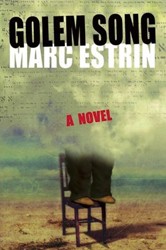What is life really like as a Satmar? I Am Forbidden opens the window and then pushes the reader right through the door of the insular Williamsburg, Brooklyn religious community.
Anouk Markovits, raised in the Satmar sect, creates a gripping novel as she explores that world. The everyday demands, obligations, rules, and secrets are imparted from within a world not usually permeated by outsiders.
The characters move through seventy years of plot twists. The horrors of World War 11 Transylvania, Jewish life in the post-war Marais district of Paris, and eventual settlement in Brooklyn are detailed in this quickly paced, succinct, and poetic read.
In 1939 Josef Lichtenstein’s family is killed before his eyes and he is rescued by the peasant, Florina, who raises him as her Catholic son. He tries to save young Mila Heller’s family as they run to board the Kasztner train that will save selected Jews. Only Mila survives and Josef sends her to safety with Rabbi Zalman Stern and his family, who later adopt her. Mila and Atara Stern become inseparable and loving sisters as they grow up in Paris after the war. Mila is ever vigilant and ensconced in her religious adherence so she can ensure the sanctity of her dead parent’s souls. Atara, unable to stifle her curiosity about the secular world, takes the huge step of leaving the family and the fold. Mila is sent to America to marry Josef, who is now helping to establish the Satmars’ new base in Brooklyn. Mila becomes adrift from the community after many years of childlessness. Mila and Josef’s resolve, love, and beliefs are tested by the many events to follow.
The characters’ sorrows and joys are deeply felt and considered in this absorbing and honest portrayal. They struggle with extreme religious law and love while experiencing the delights of belonging along with the harshness of constantly conforming.
I Am Forbidden is a poignant and exceptional novel.
Renita Last is a member of the Nassau Region of Hadassah’s Executive Board. She has coordinated the Film Forum Series for the Region and served as Programming and Health Coordinators and as a member of the Advocacy Committee.
She has volunteered as a docent at the Holocaust Memorial and Tolerance Center of Nassau County teaching the all- important lessons of the Holocaust and tolerance. A retired teacher of the Gifted and Talented, she loves participating in book clubs and writing projects.




